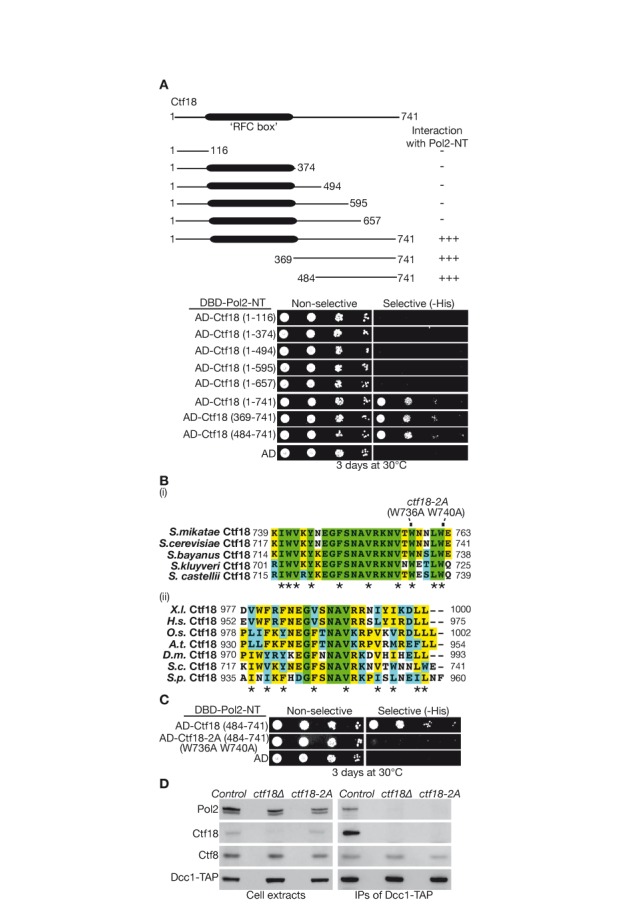Figure 3.

Mutations in a conserved motif at the carboxyl terminus of Ctf18 disrupt the interaction of budding yeast Ctf18-RFC with DNA polymerase epsilon. (A) The indicated truncations of Ctf18 were tested for their ability to interact with Pol2-NT in the two-hybrid assay. (B) (i) Alignment of the carboxyl terminus of Ctf18 from each of the indicated budding yeast species, generated with ClustalW and BOXSHADE software. Asterisks denote 10 conserved hydrophobic residues within this region. (ii) An analogous alignment of the end of the Ctf18 protein from diverse eukaryotic species, showing conservation of 9/10 hydrophobic residues (X.l. = Xenopus laevis; H.s = Homo sapiens; O.s. = Oryza sativa; A.t. = Arabidopsis thaliana; D.m. = Drosophila melanogaster; S.c. = Saccharomyces cerevisiae; S.p. = Schizosaccharomyces pombe). (C) The W736A W740A mutations prevent interaction of yeast Ctf18 484–741 with Pol2NT in the yeast two-hybrid assay. (D) Asynchronous cultures of DCC1-TAP (Control, YLG301), DCC1-TAP ctf18Δ (ctf18Δ, YVM850) and DCC1-TAP ctf18–2A (ctf18–2A, YLG303) were grown at 24°C, and then processed as in Figure 1A.
